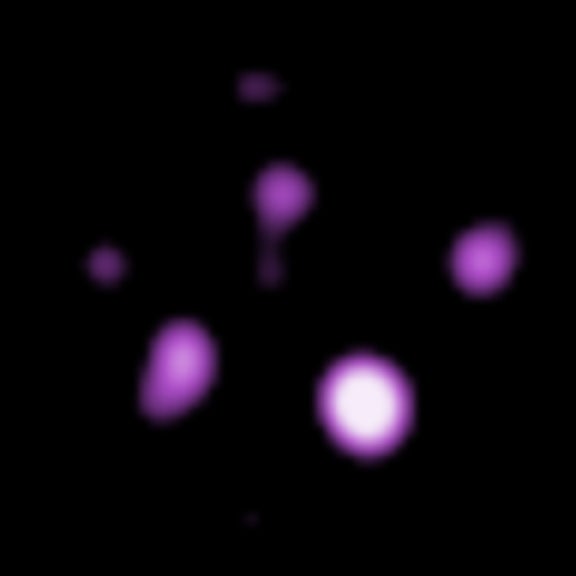
The Cloverleaf is a 17th-magnitude quasar whose image has been reproduced four times through gravitational lensing — an occurrence caused by the powerful gravitational field of a massive, intervening galaxy, which has bent and magnified the light from this distant quasar to produce the multiple images we see.
Equally fascinating is that in X-ray imaging by NASA’s Chandra orbiting telescope, one of the four quasar images appears brighter than the others — an effect likely caused by microlensing, where a single or binary star in the intervening galaxy has passed directly in front of the supermassive black hole at the quasar’s heart.
What’s more, at 11 billion light-years away, the Cloverleaf quasar is one of the most distant objects known to possess a large amount of cold molecular gas (notably carbon monoxide), which appears to be surrounding the quasar in a rotating disk. This molecular gas complex has an infrared mass of some 10 billion Suns, which, when combined with the object’s active galactic nucleus, provides evidence there was abundant material and ample conditions for large-scale star formation in the early universe.
The Cloverleaf quasar lies about 8° south of brilliant Arcturus in Boötes, and roughly 1° north of the 12th-magnitude galaxy NGC 5532. Large amateur telescopes should be able to detect the optical quasar but resolving it is another matter, requiring crisp sub-arcsecond resolution.









